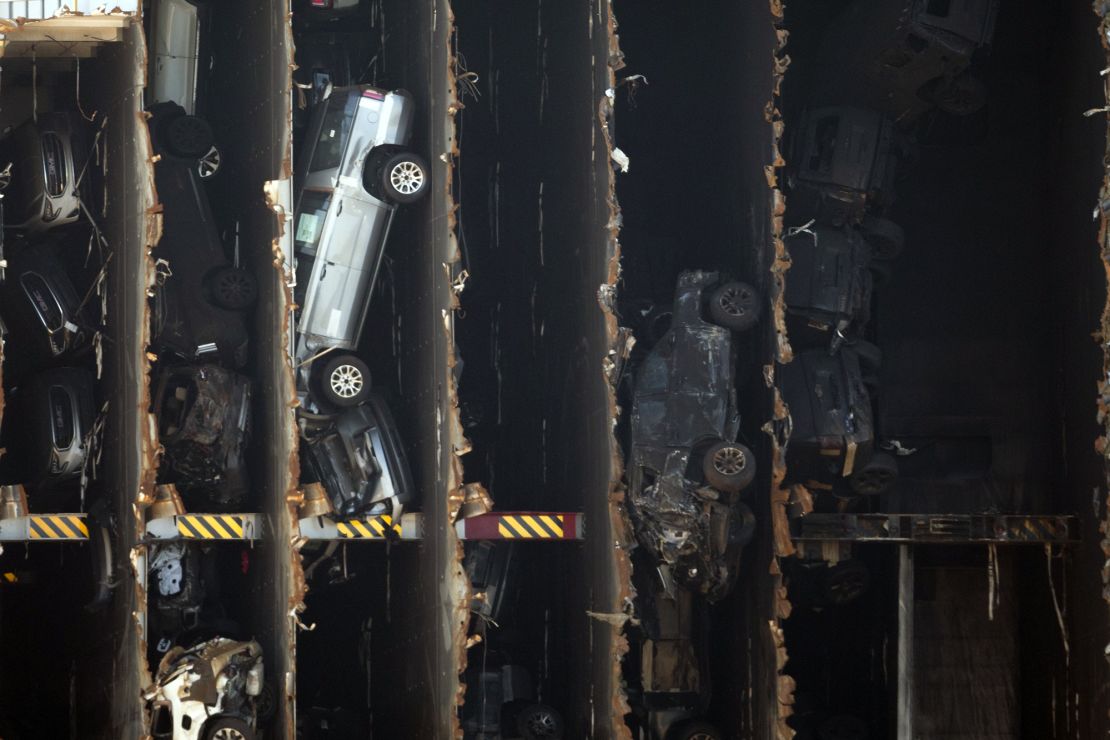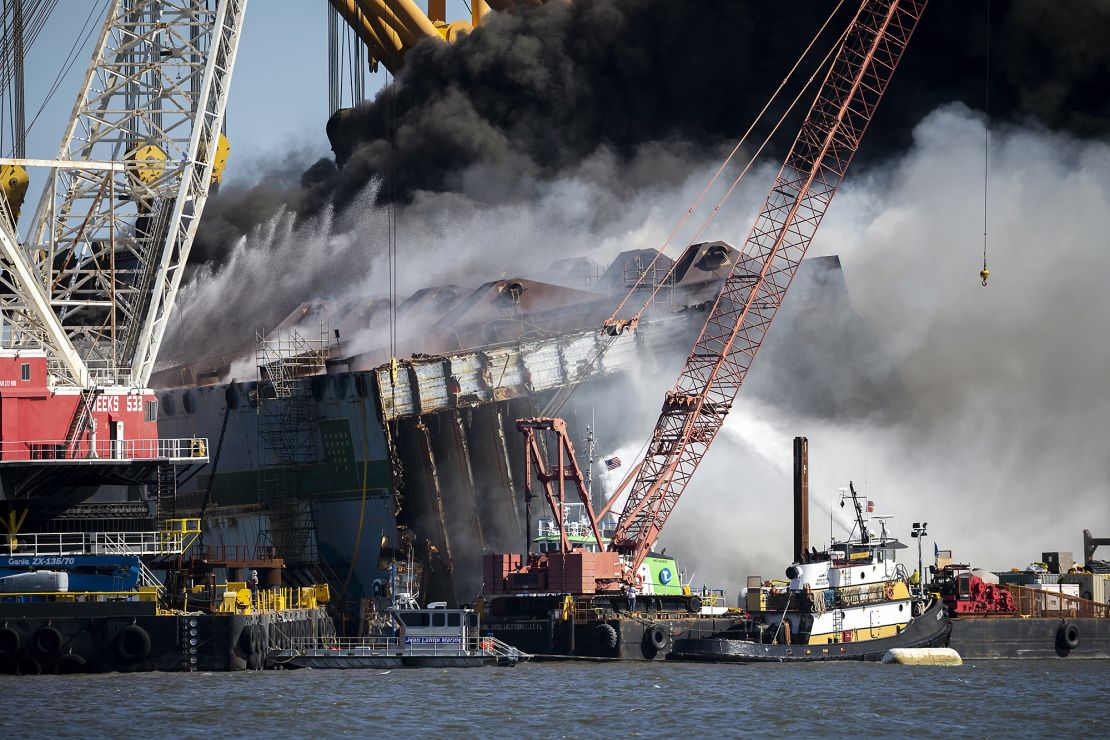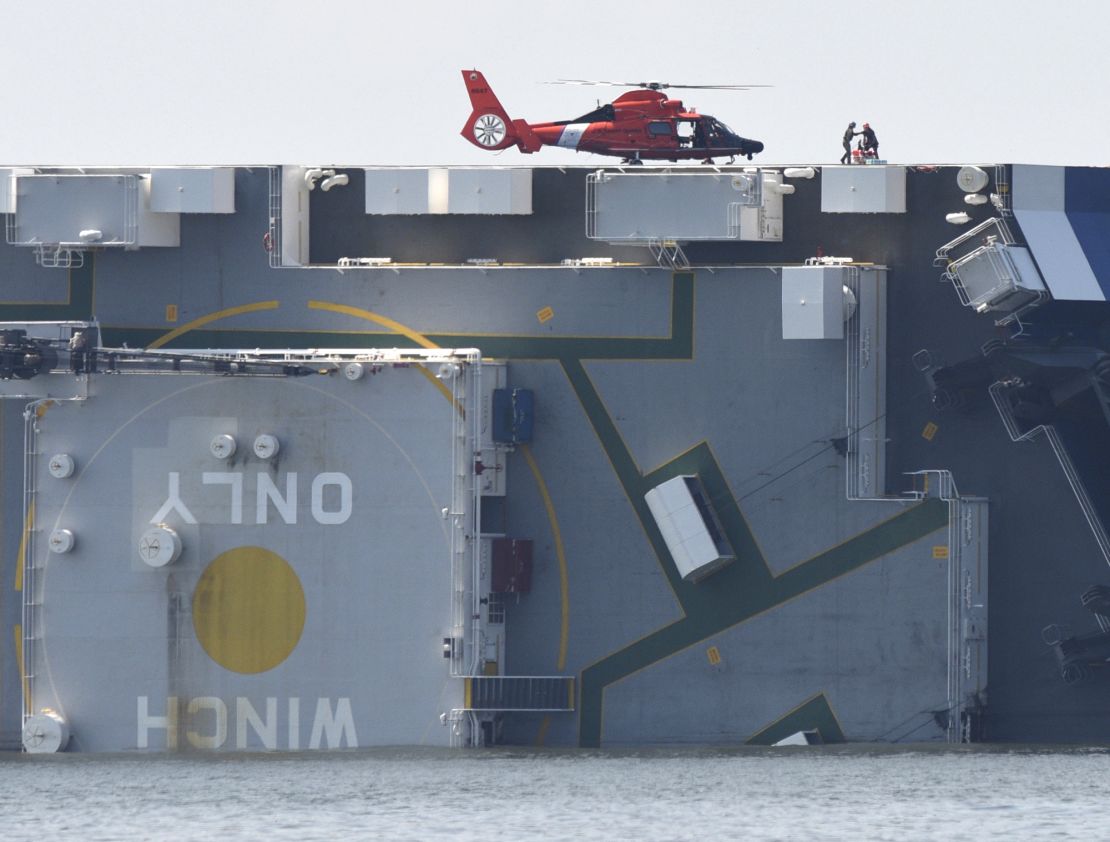The capsizing of the Golden Ray cargo ship off the Georgia coast two years ago, which resulted in more than $200 million in damage, was caused by incorrect calculations about the vessel’s stability, the National Transportation Safety Board said Tuesday.
In its report about the investigation into the September 2019 capsizing, the NTSB also found that two watertight doors had been left open, which caused the vessel to flood after it capsized. The flooding trapped four crew members who were later rescued.
Workers started disassembling the 656-foot vessel and removing it from the water in sections in February 2020. They made the final cut earlier this month and have two more sections to remove, according to the St. Simons Sound Incident Unified Command.

The Golden Ray was carrying 4,100 vehicles and 24 crew members when it overturned while traveling through St. Simons Sound. Ultimately fire, flooding and saltwater corrosion meant the ship was declared a total loss estimated at $62.5 million, the NTSB said in its report, and an estimated $142 million worth of cargo was lost.
The probable cause of the capsizing was the chief officer’s mistake while entering ballast quantities into the stability calculation program, the NTSB report said. That meant the vessel had less stability than the chief officer calculated, the report said.
The operator of the ship also had no procedures to verify the chief officer’s calculations, so the operator and master of the ship didn’t know the Golden Ray was sailing without meeting stability requirements, the NTSB said.

The accident
The Golden Ray left the Port of Brunswick at 1 a.m. on September 8, 2019, after unloading and loading vehicles and was on its way to Baltimore. As the vessel made a turn to the right, it heeled quickly to its left side, eventually settling at an angle of 90 degrees, the NTSB report said.
In a public hearing last year, Capt. Jonathan Tennant, who steered the ship out of the port, said everything seemed normal before it capsized.
The other crew members were South Korean nationals. The first engineer on the ship, Junyong Kim – who was the last person to be rescued – also said nothing seemed out of the ordinary until the ship turned sideways.
After the distress call, first responders began arriving shortly after 2 a.m. with vessels from the Coast Guard and Georgia Department of Natural Resources and a Coast Guard helicopter. By 6:45 a.m., they had rescued 20 crew members, and it took until the evening of the following day for first responders to rescue the four who were trapped.

Two crew members were seriously injured, the NTSB said.
The NTSB’s recommendations
As a result of its investigation, the NTSB recommended that the operator of the vessel, G-Marine Service Co. Ltd., create procedures for verifying stability calculations before a vessel leaves port.
It also recommended the company verify the crew follows a departure checklist regarding the closing of watertight doors.
On the Golden Ray, the NTSB found, “the two watertight doors had been left open for almost 2 hours before the accident. However, no one on the bridge ensured that the doors were closed before departure from the port.”
CNN’s Natasha Chen contributed to this report.

